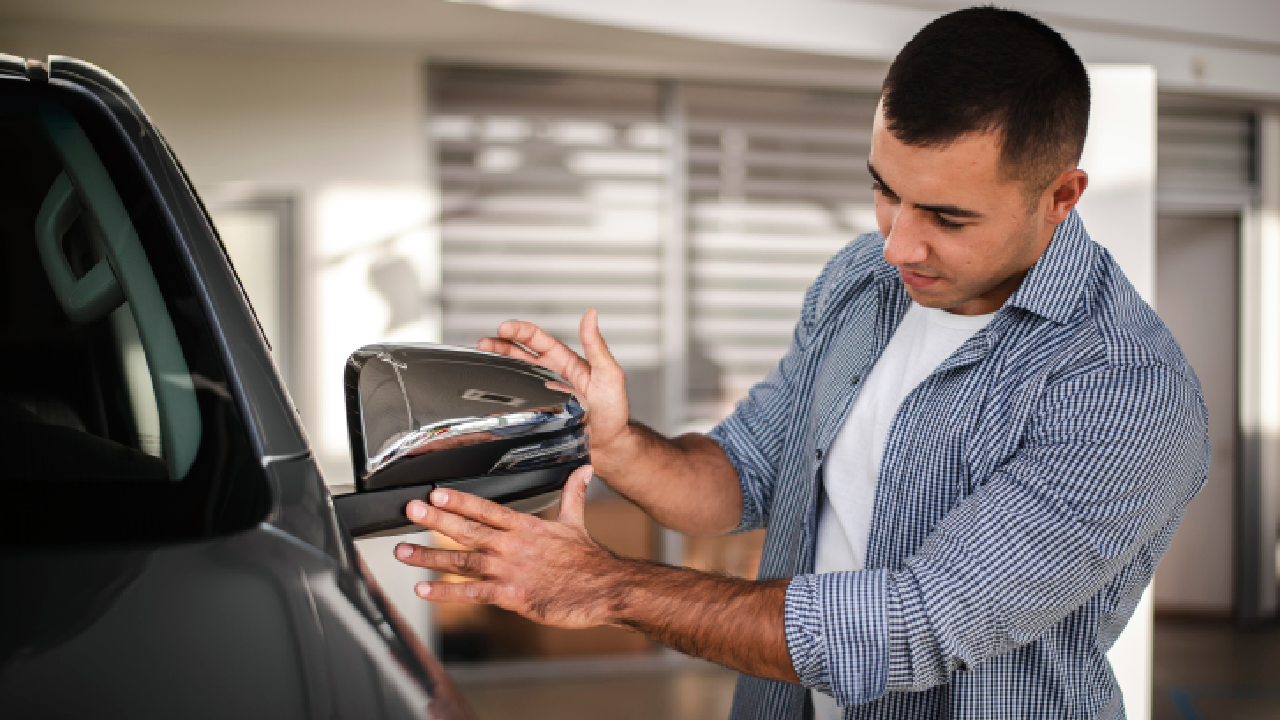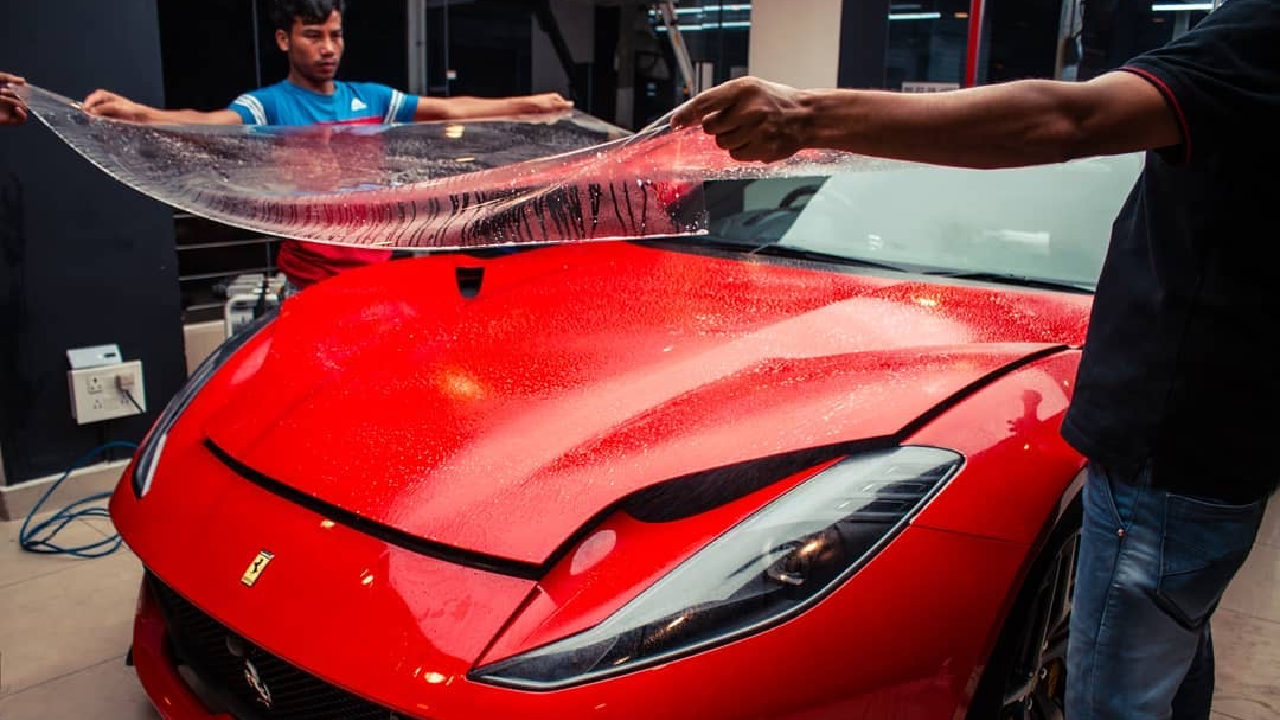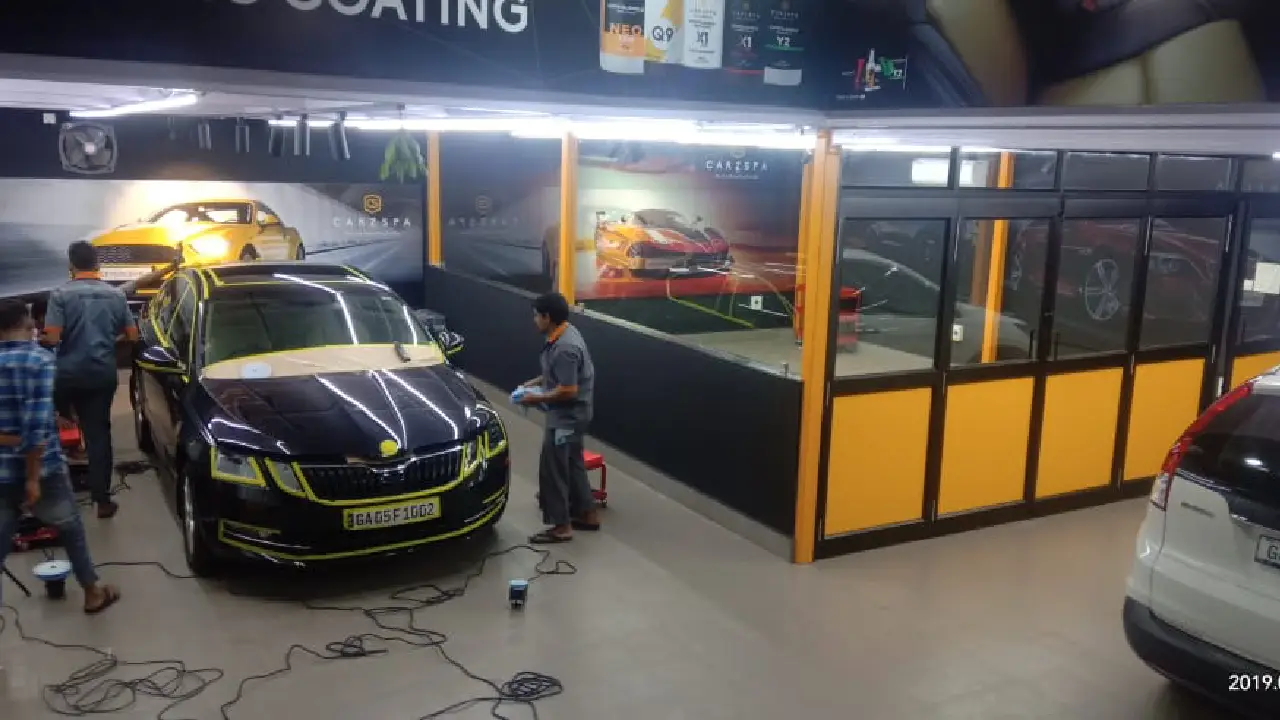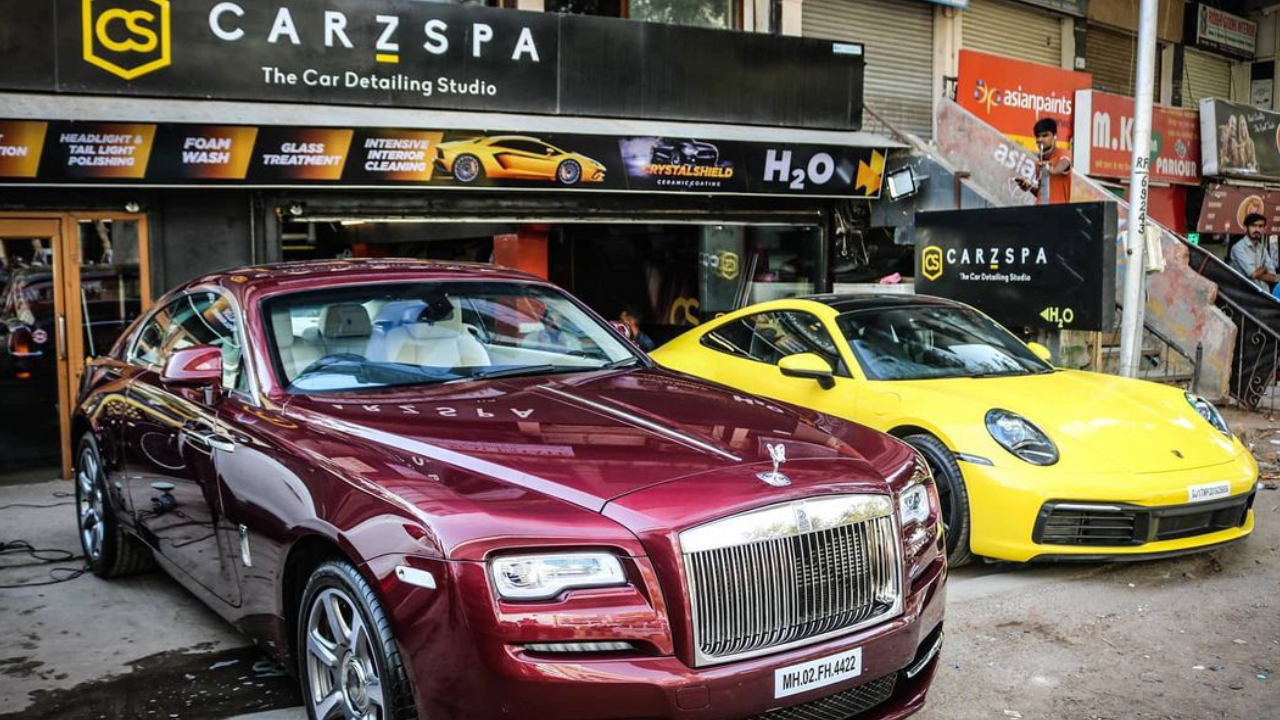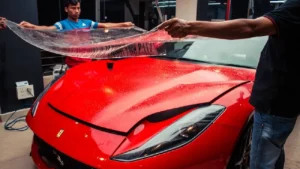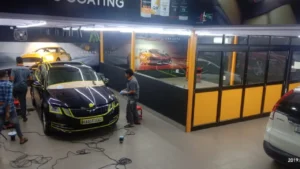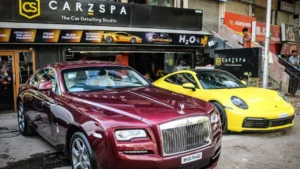The smell of a brand-new car—it’s an intoxicating mix of fresh leather, factory plastics, and pure potential. That feeling, the sense of pride and a clean slate, is why you chose your vehicle. But the moment you drive it off the lot, the clock starts ticking not just on the odometer, but on its value.
A new car is one of the most significant investments you will ever make, and a lack of proper care in the first year can lead to rapid depreciation. Conversely, establishing a meticulous care routine from day one is the single most effective way to protect its performance, preserve its aesthetic integrity, and, most importantly, lock in the highest possible resale value when it’s time to upgrade.
This comprehensive guide will walk you through the non-negotiable steps of post-delivery care, from critical mechanical schedules to the protective films and coatings that make a tangible difference in a decade.
Table of Contents
The First 24 Hours: Your Post-Delivery Checklist
The excitement of the delivery handover can be overwhelming, causing you to overlook minor yet critical details. Your “Day One Duty” is a final, diligent check to ensure your car is set up for optimal long-term health.
Why It Matters
Addressing simple errors, like incorrect tire pressure or missing documents, prevents major mechanical wear, safeguards your warranty, and ensures a solid starting point for your ownership journey.
Documentation & Warranty
Confirm that the Vehicle Identification Number (VIN) and engine number on the registration, insurance, and warranty documents match the vehicle. Ensure the owner’s manual is present and accounted for. File these immediately. A complete paper trail of ownership and service is essential for retaining resale value.
Tyre Pressure Correction
Look for the recommended PSI on the sticker inside the driver’s side door jamb (or in the manual), not the maximum pressure listed on the tyre itself. Tyres are often overinflated for transit. Use a reliable gauge to adjust all four tyres and the spare to the manufacturer’s specification when the tires are cold.
Fluid Top-Ups
Check engine oil, brake fluid, coolant, and windshield washer fluid levels. While the dealer should handle this, a quick inspection for levels and any immediate signs of leaks provides invaluable peace of mind.
Initial Walk-Around
Inspect the paint under natural daylight. Check the wheel alignment and balance by driving straight briefly on a flat road. If you spot any pre-existing scratches or defects, get them logged with the dealer before you drive away permanently.
The Break-In Period for First 1,500 km
The first 1,000 to 1,500 kilometers are the most critical for your car’s engine, transmission, and brakes. This “break-in” period allows thousands of microscopic moving parts, specifically the piston rings against the cylinder walls, to seat and wear in properly. Failing to follow these rules can lead to long-term issues like excessive oil consumption and reduced performance.
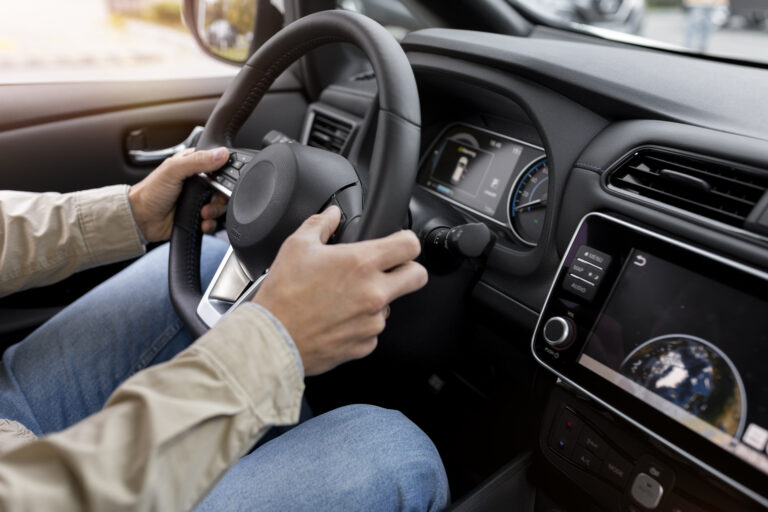
Why It Matters
A successful break-in ensures smooth, efficient, and powerful engine operation for the rest of your car’s life, directly influencing its longevity and fuel economy—two factors majorly affecting future buyer interest.
How to Do It
- Mind the RPMs: Keep the engine speed between 2,000 RPM and 4,000 RPM. This is the golden window. Avoid pushing the engine to the red line or driving aggressively.
- Vary the Speed: Avoid driving at a constant speed for prolonged periods. This means skipping long, unchanging highway cruises using cruise control. Constantly vary your speed to alter the load on the engine, which helps the piston rings seat correctly.
- Accelerate and Brake Gently: Avoid sudden, hard acceleration or sharp, aggressive braking. Your brake pads and discs are brand new and need time to develop an even contact surface. Gentle use ensures uniform wear and optimal stopping power later.
- No Heavy Loads: Refrain from towing trailers or carrying extremely heavy loads during this period, as it puts unnecessary strain on the drivetrain.
Expert Advice For Your First Service:
Schedule your first maintenance service exactly as the manufacturer recommends, often around 1,500 km. This initial service, which typically includes an oil change, is vital to remove the tiny metal particles that naturally occur as new components wear against each other. Don’t skip it.
Protecting Your Investment from Day One
While mechanical maintenance is the backbone of your car’s function, cosmetic care is the face of its value. When a prospective buyer evaluates your car, the paint condition is the first, most influential factor. Maintaining a flawless exterior instantly signals diligent ownership and justifies a higher price.
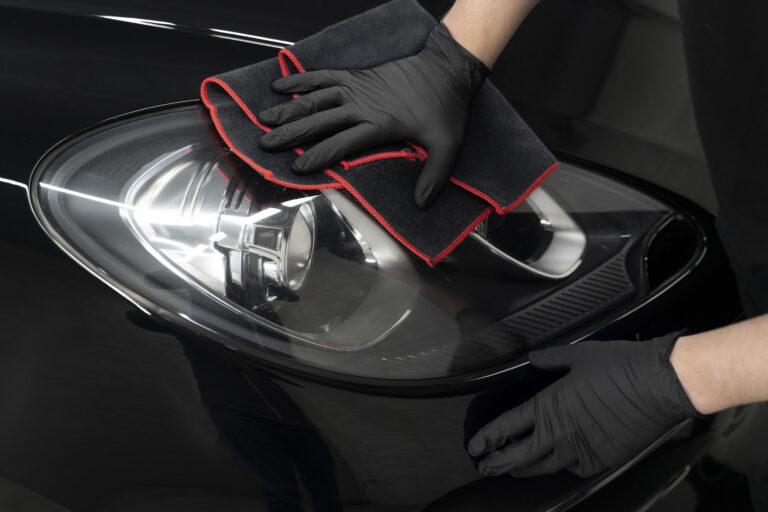
Why It Matters
In the Indian climate, your car’s paint faces a daily onslaught of UV radiation, industrial fallout, acidic bird droppings, road tar, and minor stone chips. Each of these degrades the clear coat, dulls the colour, and drives down the perceived and actual value of your car.
Why Wax Doesn’t Work
Many owners rely on traditional car wax, which provides a nice shine but is only a temporary, sacrificial layer. Wax typically lasts a few weeks to a few months at best before washing off, offering only minimal protection against harsh chemicals and no defense against stone chips. For a long-term investment, you need a long-term solution.
Trust The Experts, Protect With CarzSpa
The only way to create permanent, investment-grade protection is through professional-grade car paint protection solutions, i.e. ceramic coatings or Paint Protection Films (PPF).
Ceramic Coating
A professional ceramic coating, such as CrystalShield by CarzSpa, is a liquid polymer that chemically bonds to the vehicle’s factory paint, forming a permanent, robust layer of protection.
- Superior Durability: Unlike wax that lasts weeks, CrystalShield Ceramic Coatings last for years, eliminating the need for frequent re-applications and saving you time and money over the car’s lifespan.
- Unbeatable Hydrophobic Properties: The coating repels water, dirt, and grime, causing contaminants to bead up and roll off. This makes regular washing incredibly easy, maintaining the car’s aesthetic with minimal effort.
- UV & Chemical Defence: It acts as a shield against harmful UV rays that cause paint oxidation and fading, and provides chemical resistance against environmental etching from bird droppings and acid rain.
- Resale Value Impact: Cars with a well-maintained ceramic coating can see an estimated 5% to 10% increase in resale price due to the preserved colour depth and mirror-like, scratch-resistant finish.
Paint Protection Film (PPF)
For the ultimate protection, especially on high-impact areas like the bumper, bonnet, fenders, and side mirrors, Paint Protection Film (PPF) is non-negotiable. Aegis PPF is a thick, transparent thermoplastic polyurethane (TPU) film that acts as a physical, self-healing barrier.
- Chip and Scratch Defence: PPF physically absorbs the impact of road debris, stone chips, and minor abrasions that would otherwise etch and chip the paint. Its self-healing properties mean minor swirl marks disappear with heat.
- Preservation of Original Paint: By protecting the factory paint from damage, PPF ensures that when the time comes to sell, the buyer is looking at original, flawless paintwork, which is crucial for maximizing value.
- Resale Value Impact: Vehicles with full PPF coverage and intact, original paint can command a premium and a quicker sale, with some reports indicating up to a 15% increase in trade-in or resale value compared to similar, unprotected models.
Maintenance & Service Records
A car is only as valuable as the maintenance history that accompanies it. A potential buyer views a complete set of service records as proof of the care you’ve detailed in this guide.
Why It Matters
Maintaining a comprehensive log of every oil change, tire rotation, and scheduled service validates the car’s condition and eliminates doubt for the next owner. Missing or incomplete records are one of the fastest ways to devalue a vehicle, often leading to immediate low-ball offers.
The Owner’s Manual is Your Bible
Your manual contains the definitive, manufacturer-specific schedule for all maintenance tasks, from fluid types to replacement intervals. Follow this schedule religiously and keep a digital and physical record of every action.

Additional Expert Tips
Beyond the major scheduled tasks, these regular habits you adopt will sustain the “new car” feeling for years.
- Monthly Fluid & Tyre Checks: Make it a habit to check the oil, coolant, and tire pressure (including the spare) every four weeks. Consistency prevents small leaks or drops from escalating into costly engine damage.
- Park Smart: Whenever possible, use covered parking or a quality car cover. Direct sunlight is the enemy of any unprotected surface, leading to rapid dashboard cracking, plastic fading, and paint dullness.
- Interior Care: Clean the interiors regularly. Use high-quality leather/vinyl protectants that contain UV blockers to prevent cracking and fading. The showroom-fresh cabin vibe is a major contributor to a buyer’s final decision.
- Listen and Observe: Pay immediate attention to any new or unusual sounds—a squeak, a rattle, or an unfamiliar smell. Addressing small issues quickly prevents them from becoming major repairs that impact your wallet and your car’s service history.
Conclusion
Your new car is more than just a mode of transport; it’s a canvas of your life’s journeys and a substantial financial asset. The difference between a car that holds its value and one that rapidly depreciates comes down to proactive, diligent care from the moment you take delivery.
By successfully navigating the critical break-in period, religiously adhering to maintenance schedules, and making the wise, long-term investment in professional Paint Protection Film (PPF) or Ceramic Coatings like Aegis and CrystalShield from CarzSpa, you safeguard not just the beautiful finish, but the maximum return on your investment.
Visit CarzSpa today to give your new car the ultimate protective start it deserves and lock in its future value.
Frequently Asked Questions
1. Is a break-in period still necessary for modern cars?
Yes. While manufacturing tolerances are tighter, the break-in period (typically the first 1,000 to 1,500 km) is still necessary to allow the engine’s piston rings, transmission, and brakes to properly seat for optimal long-term health and performance.
2. How soon after delivery should I get a Ceramic Coating or PPF?
Immediately. The ideal time is within the first week of ownership, as this locks in the factory-fresh, flawless paint condition before any environmental damage, chips, or swirl marks have a chance to occur.
3. Does a full-service history truly affect resale value?
Absolutely. A car with complete, stamped, and logged service records (detailing every oil change, filter replacement, and major service) can fetch significantly higher prices—often 10-15% more.
4. What is the most common mistake new car owners make?
The most common mistake is neglecting the paint protection and relying only on occasional washing. They fail to protect the clear coat from UV rays and chemicals, allowing the paint to fade.
5. Which is better for resale value: Ceramic Coating or PPF?
Both are excellent investments. Ceramic Coating (CrystalShield) provides superior, long-lasting chemical resistance, hydrophobic properties, and deep gloss. PPF (Aegis PPF) provides the physical armor against deep scratches and stone chips.

